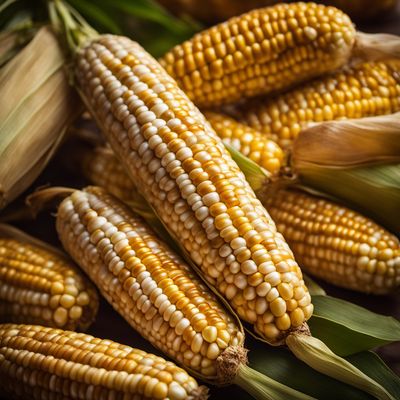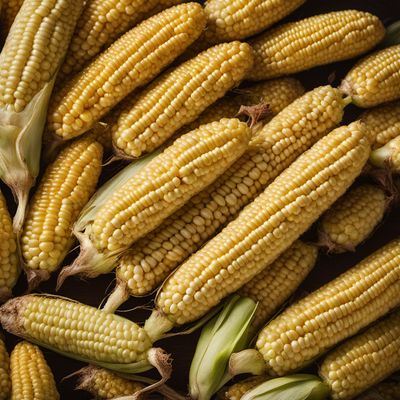
Ingredient
Maize and similar-
Golden Grains
Maize, or corn, is a cereal grain that comes in various colors, including yellow, white, and blue. It has a starchy texture and a subtly sweet flavor. With its versatility, maize can be used in both savory and sweet dishes, such as soups, salads, bread, and desserts. Its kernels can be boiled, roasted, ground into flour, or processed into cornmeal or cornstarch. The appearance of maize varies depending on the variety, but it typically consists of plump, cylindrical kernels tightly arranged on a cob.
Origins and history
Maize has a rich history that dates back thousands of years. It originated in Mesoamerica, where it was cultivated by indigenous peoples such as the Mayans and Aztecs. Maize played a vital role in their diets and cultural practices, symbolizing sustenance and fertility. It later spread to other parts of the world through European exploration and colonization. Today, maize is widely grown in countries like the United States, China, Brazil, and Mexico.
Nutritional information
Maize is a good source of dietary fiber, vitamins, and minerals. It contains essential nutrients like folate, thiamine, and vitamin C. Additionally, it provides energy in the form of carbohydrates and is relatively low in fat. A cup of cooked maize contains approximately 124 calories.
How to select
When selecting maize, look for ears that have bright, plump kernels that are tightly packed. The husks should be fresh and green, without any signs of mold or damage. Avoid ears with dry or shriveled kernels. If purchasing pre-packaged maize, check for any signs of moisture or insect damage. Freshly harvested maize is often the best choice, so consider buying from local farmers' markets during the peak season.
Storage recommendations
To maintain the freshness of maize, store unhusked ears in a cool, dry place. If the husks have been removed, wrap the ears tightly in plastic wrap or store them in a sealed container in the refrigerator. Cooked maize can be stored in an airtight container in the refrigerator for up to 3-4 days. For longer-term storage, blanch the kernels and freeze them in freezer-safe bags or containers.
How to produce
Maize can be grown by amateur gardeners in regions with a suitable climate. It requires a sunny location with well-drained soil. Sow the seeds directly into the ground after the last frost, spacing them adequately to allow for proper growth. Regular watering and fertilization will help the plants thrive. Harvest the ears when the kernels are plump and fully mature.
Preparation tips
To prepare maize, start by removing the husks and silk from the ears. Rinse the ears under cold water to remove any dirt or debris. Boil the ears in salted water for 5-7 minutes or until the kernels are tender. Alternatively, you can grill or roast the ears for a smoky flavor. Once cooked, maize can be enjoyed on its own with butter and salt or used in various recipes. Try adding it to salads, soups, stews, or casseroles for added texture and flavor.
Culinary uses
Maize is widely used in various culinary applications. It is a staple ingredient in dishes like cornbread, tortillas, tamales, and polenta. Maize flour is commonly used for making corn tortillas, cornbread, and other baked goods. Cornmeal is used in batters for frying or as a coating for fried foods. Additionally, maize is used in the production of corn syrup, corn oil, and various processed foods.
Availability
Maize is commonly available and cultivated in countries such as the United States, China, Brazil, Mexico, and Argentina.



